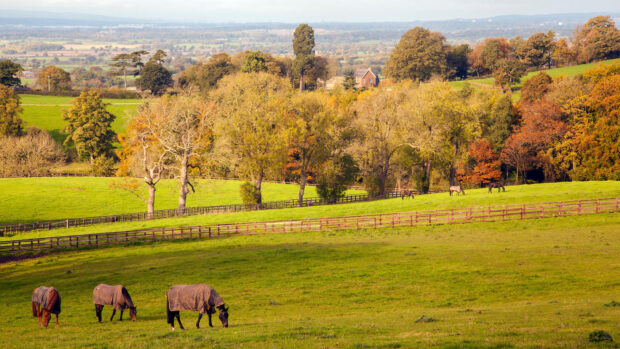Equine grass sickness (EGS) is a disease of the nerves that co-ordinate intestinal movement and peristalsis. More specifically, scientists think the disease is caused by toxins released from the bacteria Clostridium botulinum that damage these and other nerves throughout the
horse’s body.
The signs of disease shown by horses with EGS reflect this damage to the nervous system:
- Damage to nerves of the intestine causes normal gut motility to cease. This leads to distension of small intestine and impaction of large intestine with food material.
- Nerve damage and release of adrenalin-like substances causes an increase in heart rate.
- Damage to nerves that cause sweating causes intermittent “patchy” sweating, often on the neck and flanks.
- Damage to the nerves controlling saliva production can cause profuse salivation.
Grass sickness occurs in two different forms. The sudden-onset (acute) form of the disease is characterised by signs of colic. In fact, it is very difficult to differentiate this cause of colic from the many other types of intestinal problem that are classed as “colic”.
The second type of EGS is much slower in onset and takes the form of progressive weight loss. Over a period of up to two weeks, horses become thinner with a markedly “tucked-up” abdomen. Some people describe this as a “Greyhound” appearance (see above). Horses affected by this slower onset (chronic) form of disease become very depressed and have difficulty eating food.
There is a common misconception that grass sickness only happens in Scotland, but this is incorrect. There is little doubt that the highest prevalence of the disease is in Scotland, but EGS has been diagnosed in most counties of England and Wales. The disease does show regional clustering. Particular regions have a higher prevalence of the disease, although the underlying reasons for these differences are poorly understood at present. Generally, the southern counties of England have a lower prevalence of EGS than northern counties.




